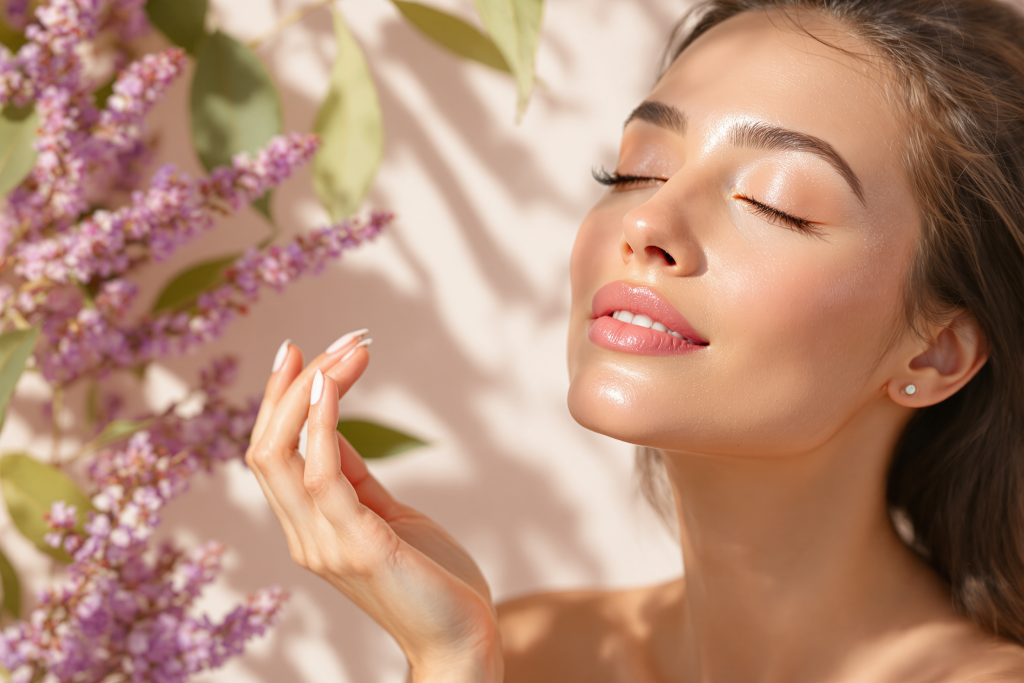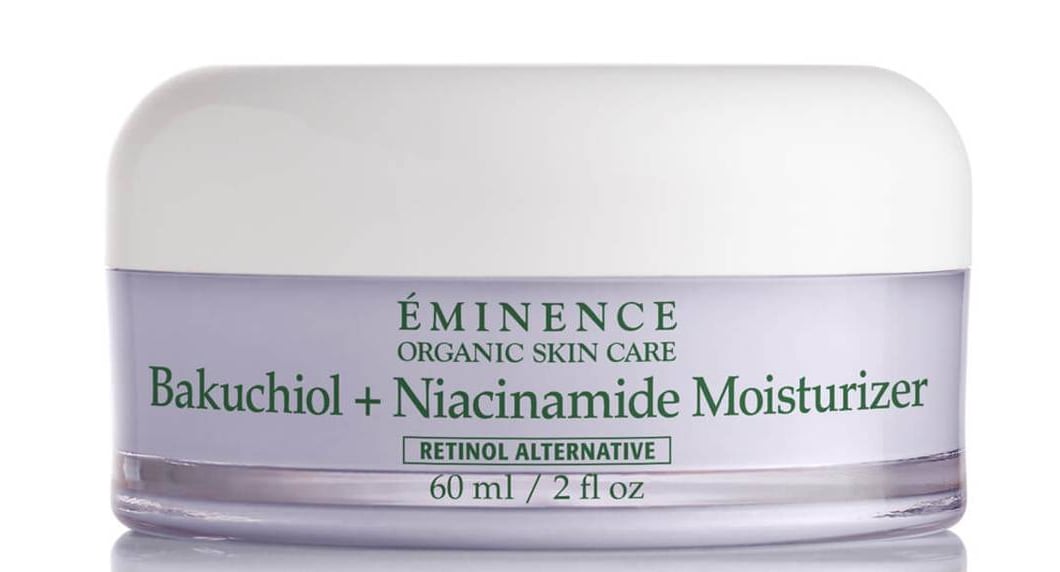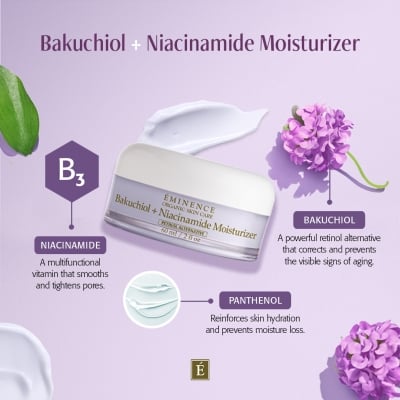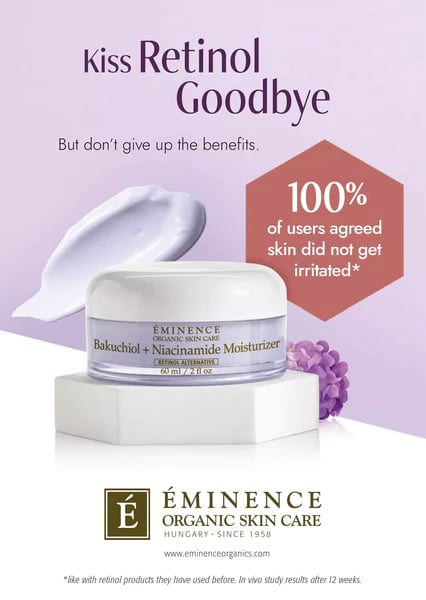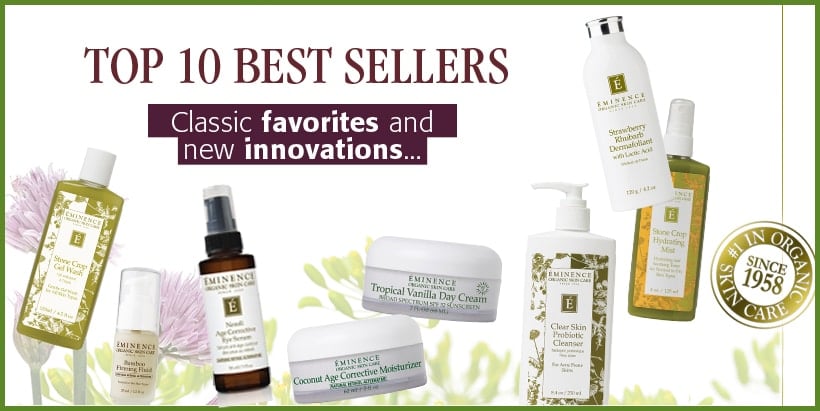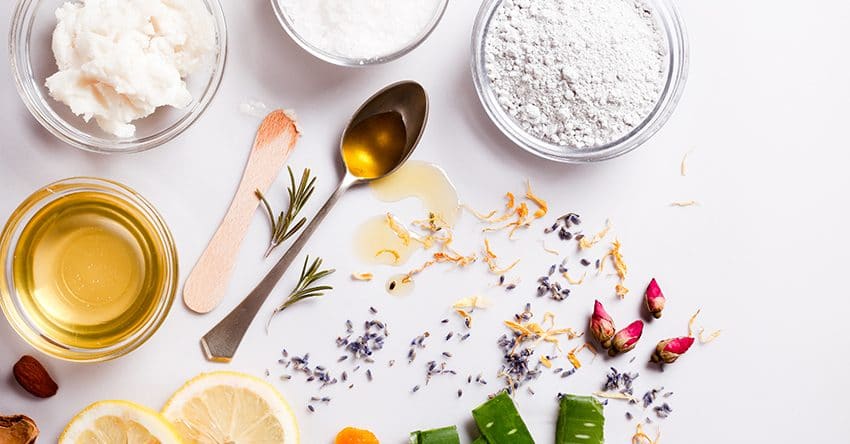Introduction to Bakuchiol
What is Bakuchiol? Bakuchiol (pronounced “buh-KOO-chee-all”) is a trending plant-based skincare ingredient revered as a natural alternative to retinol. It is a meroterpene compound extracted from the seeds and leaves of the Babchi plant (Psoralea corylifolia), which has been used for centuries in Ayurvedic and Traditional Chinese medicine
First isolated by scientists in the 1960s, bakuchiol has a similar gene expression profile to retinol – meaning it can deliver comparable skin benefits without the harsh side effects often associated with vitamin A derivatives
In recent years, it has gained huge popularity in the beauty industry as a gentle, plant-based retinol alternative for skin rejuvenation
Why the buzz in skincare? Bakuchiol is celebrated for offering many of the same benefits as retinol – such as stimulating collagen production and accelerating cell turnover – minus the irritation. It has potent antioxidant and anti-inflammatory properties, helping to neutralize free radicals and calm the skin
. Studies and anecdotal reports suggest bakuchiol can help improve fine lines, wrinkles, uneven skin tone, and loss of firmness, giving the skin a smoother, more radiant appearance
. Unlike retinol (which is typically synthetic or animal-derived), bakuchiol is 100% plant-derived from Babchi seeds, aligning with the clean beauty and vegan skincare movement
In summary, bakuchiol is often hailed as “nature’s retinol.” It offers a bridge between traditional botanical remedies and modern science: you get retinol-like results supported by scientific research, delivered in a gentle, botanical form
In the sections below, we’ll explore how bakuchiol compares to retinol, dive into scientific evidence and expert insights, highlight the best bakuchiol skincare products, share a DIY bakuchiol recipe, discuss potential side effects, and finally offer tips on how to use it for best results.
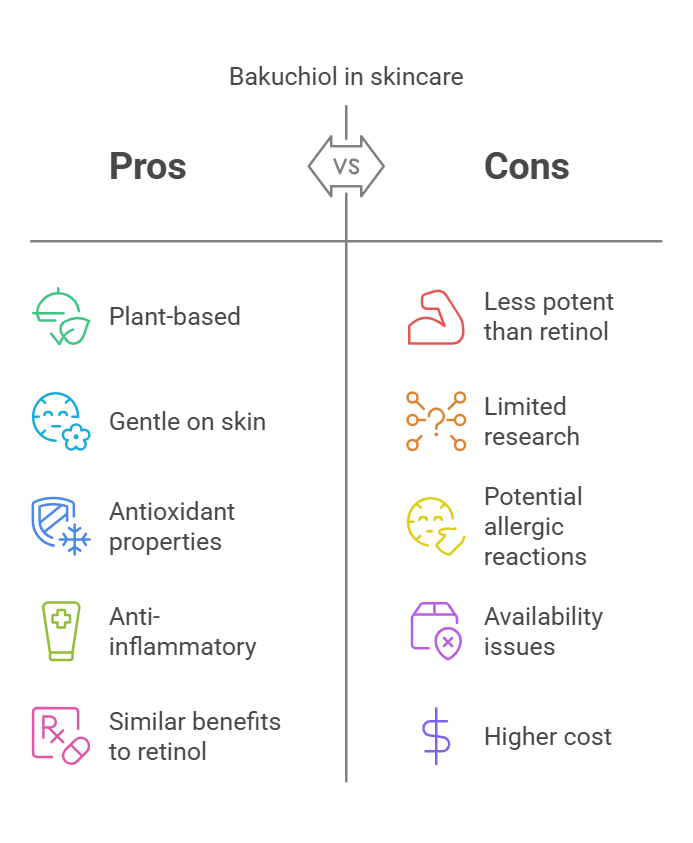
Bakuchiol vs. Retinol: How Do They Compare?
Bakuchiol is frequently compared to retinol because of their similar effects on the skin – but there are key differences. Here’s a breakdown of bakuchiol vs. retinol in terms of effectiveness, benefits, safety, and suitability for different skin types:
Structure & Origin: Retinol is a form of vitamin A (often derived from animal sources or made synthetically), whereas bakuchiol is a completely different molecule – it’s not a vitamin A at all
Bakuchiol is derived from the Babchi plant (100% vegan), while retinol in skincare is usually lab-made or from animal products
In other words, they are structurally unrelated, even though they act similarly on the skin.
Mechanism & Benefits: Retinol is the gold-standard anti-aging ingredient known to boost collagen production, increase cell turnover, improve elasticity, diminish wrinkles, fight acne, and even out pigmentation. Bakuchiol, amazingly, mimics many of these effects. Research shows bakuchiol can soften fine lines and wrinkles, improve skin firmness and elasticity, even out skin tone, diminish sunspots, and give skin a fresh glow, much like retinol
In fact, a comparative gene expression study confirmed that bakuchiol operates as a functional analog of retinol, activating similar pathways for skin renewal
. Both ingredients are powerful anti-agers – bakuchiol just achieves it in a gentler way.
Effectiveness: Multiple studies and trials have found bakuchiol’s anti-aging efficacy to be on par with retinol when it comes to improving photoaging (sun damage, wrinkles, and hyperpigmentation). For example, a landmark 12-week clinical trial on 44 patients showed that using 0.5% bakuchiol twice daily produced equivalent improvements in wrinkles, fine lines, and hyperpigmentation as using 0.5% retinol once daily
Neither group had statistically significant differences in results – suggesting bakuchiol (at twice daily use) can match retinol’s benefits
We’ll cover more on this study in the Scientific Evidence section. In short, bakuchiol measures up impressively well against retinol for over-the-counter strength treatments.
Irritation & Side Effects: This is where bakuchiol shines. Retinol’s big drawback is the risk of irritation – it’s notorious for causing dryness, peeling, redness, itching and burning, especially when first introduced or used on sensitive skin
Many people experience an “adjustment period” with retinol (often called the retinol uglies or retinization) involving flaking and irritation. Bakuchiol, by contrast, is much gentler and better tolerated. In the 44-person study mentioned above, the bakuchiol users reported significantly less scaling, peeling and stinging than the retinol users
. Dermatologists note that bakuchiol delivers retinol-like results without the redness and irritation that cause many to quit retinol
This makes bakuchiol a great option for those with sensitive skin or conditions like eczema or rosacea who cannot tolerate retinoids
In fact, one dermatologist said, “Bakuchiol is a nice way to get the benefits [of retinol] without skin irritation,” especially for dry and sensitive skin typesSun Sensitivity: Retinol (and prescription retinoids) can make skin more sensitive to the sun. Retinol speeds up cell turnover and can thin the outer skin layer slightly, reducing the skin’s natural UV protection. This is why retinol is usually recommended at night and users are told to be diligent with sunscreen – retinol use can increase the risk of sunburn and sun damage if you’re not careful
. Bakuchiol has a big advantage here: it is not known to be photosensitizing. Bakuchiol is stable in sunlight and does not increase sun sensitivity
This means you can use bakuchiol in the daytime (though wearing daily SPF is still essential for skin health
). Because it won’t break down with UV exposure, bakuchiol can be used morning and night for faster results, whereas retinol is typically night-only. Nonetheless, always protect your skin with sunscreen daily, as both aging and any active ingredients can be impacted by UV exposure.
Skin Type Suitability: Retinol, while effective, isn’t suitable for everyone. Those with very sensitive, dry, or reactive skin often struggle with retinol’s side effects. Bakuchiol’s gentleness makes it suitable for virtually all skin types, including sensitive skin
. Even people with conditions like rosacea or acne who can’t handle retinol have been able to use bakuchiol without flare-ups in studies
. Bakuchiol is also non-comedogenic (it won’t clog pores), and some research suggests it can even help prevent clogged pores and acne due to its anti-bacterial and anti-inflammatory traits
. That said, individual experiences vary – a small number of people could still have minor irritation or allergy (more on that later), so it’s always wise to patch-test a new product.
Pregnancy and Breastfeeding: One of the biggest limitations of retinol is that vitamin A derivatives are not recommended during pregnancy (and breastfeeding) due to risk of birth defects. Even topical retinol is generally on the “avoid” list for expectant mothers. Bakuchiol, being structurally unrelated to vitamin A, does not carry the same known risk. Dermatologists largely consider bakuchiol safe to use during pregnancy as a gentler alternative
. In fact, bakuchiol has become popular as the go-to “pregnancy-safe retinol alternative” in many pregnancy skincare guides. However, it’s important to note that because bakuchiol is relatively new, we don’t have extensive studies on its use in pregnancy yet
. The consensus is that it’s likely safe (due to different mechanism and no vitamin A), but out of an abundance of caution, it’s still best to consult your doctor if you are pregnant or nursing and want to add bakuchiol to your routine
The good news is that many moms-to-be have used bakuchiol products to keep up an anti-aging routine during pregnancy with no issues, but always get personal medical advice.
Usage & Formulation: Retinol is a tricky ingredient to formulate with – it’s unstable (degrades with light/air), can be inactivated if combined with the wrong ingredients, and often requires special packaging (opaque, air-tight pumps) to preserve potency. Bakuchiol, on the other hand, is more stable and easy to formulate since it’s not as finicky about light or pH
. It can be found in many formats – serums, oils, creams, even cleansers – and remains effective. Because bakuchiol is oil-soluble, it’s often found in facial oils or creamy serums. You can layer it in both your morning and evening routine. Retinol use usually starts slow (a few nights a week) to build tolerance; bakuchiol doesn’t generally require a slow build-up and can be used daily from the start, although starting a few times a week is always a cautious approach if you have any concerns. Another difference is you can often combine bakuchiol with other actives more easily – for instance, bakuchiol pairs well with vitamin C, niacinamide, peptides, hyaluronic acid, and even with retinol itself. In fact, some products now combine low-dose retinol with bakuchiol, as bakuchiol can stabilize retinol and improve skin’s tolerance to it
. (If you do use a combo product containing real retinol, then you’d still follow retinol precautions.)
Bottom Line: Bakuchiol delivers retinol-like benefits in a gentler, plant-derived package. Both ingredients can be powerful allies in your anti-aging arsenal. Retinol still has the edge for extremely rapid or pronounced results (especially prescription retinoids for severe acne or deep wrinkles), but bakuchiol is closing the gap while being far kinder to the skin
As one dermatologist put it, bakuchiol “fills an unmet need” for a retinol alternative that sensitive skin patients can use
. There’s room for both: some users even use bakuchiol and retinol together to get combined benefits – bakuchiol can make retinol work better with less irritation
However, if you’ve been wary of retinol or had trouble with it before, bakuchiol might be the gentle hero your skincare routine needs.
This moisturizer combines anti-aging niacinamide and bakuchiol. These ingredients smooth the look of fine lines, visibly tighten pores and deliver retinol-like results without the irritation. As a moisturizer, this formula also hydrates dry skin and replenishes your skin barrier.
Results:
- Smooths the look of fine lines and wrinkles with no visible irritation
- Replenishes the skin barrier and locks in hydration
- Reduces the appearance of large pores
- Skin appears visibly tightened
How to use: Apply a layer of moisturizer over the entire face and neck area. Leave on. For a lighter application, emulsify a small amount of moisturizer in your hand with a few drops of water. For extra hydration, apply a thicker layer on dry areas.
Scientific Evidence & Dermatologist Insights on Bakuchiol’s Efficacy
Bakuchiol’s rise in popularity isn’t just hype – it’s backed by scientific studies and has caught the attention of dermatologists worldwide. Let’s summarize the key scientific evidence and some expert dermatologist insights regarding bakuchiol:
Clinical Studies Proving Bakuchiol Works
The skin benefits of bakuchiol have been validated in peer-reviewed research:
2018 Landmark Study (Bakuchiol vs Retinol): The most famous study on bakuchiol was published in the British Journal of Dermatology in 2018. In this 12-week randomized, double-blind trial, 44 participants applied either a 0.5% bakuchiol cream twice daily or a 0.5% retinol cream once daily to their faces
The results were eye-opening: both groups experienced significant improvement in signs of aging – including reduced wrinkle surface area, smoother texture, and improvement in hyperpigmentation (sun spots)
Importantly, there was no statistical difference in the results between bakuchiol and retinol – bakuchiol used twice a day was just as effective as retinol used once a day
However, the big difference was tolerability: the retinol users had more side effects (like skin scaling and flaking), whereas the bakuchiol users reported minimal irritation
The study authors concluded that “bakuchiol is comparable to retinol” in its ability to improve photoaged skin and is better tolerated, making it a promising alternative for those who can’t use retinol
. This study is frequently cited as scientific confirmation that bakuchiol really can deliver retinol-like results.
2014 and 2019 Supporting Studies: An earlier 2014 study had already hinted at bakuchiol’s potential, showing improvements in skin elasticity, fine lines, and pigmentation when bakuchiol was used in a topical formulation (that study wasn’t head-to-head with retinol but showed significant anti-aging effects versus baseline). In 2019, another study (mentioned by the Cleveland Clinic) reported that bakuchiol works “as well as retinol” for addressing signs of aging, with less irritation – corroborating the 2018 trial
. By 2020, more dermatology research (including a review of available studies) reinforced that bakuchiol improves photoaging (sun damage, wrinkles) with minimal side effects on normal and sensitive skin
. Across multiple studies, bakuchiol demonstrated comparable efficacy to retinol with superior tolerability
Mechanism Insights: Laboratory studies have examined how bakuchiol works. It turns out bakuchiol can activate many of the same genes and pathways that retinol does in skin cells. A gene expression analysis found that bakuchiol upregulates genes involved in collagen synthesis and skin rebuilding, similar to retinol, but without triggering inflammation
It also has antibacterial and anti-inflammatory actions, which explains why it can help with acne and calming the skin. And unlike retinol, bakuchiol is antioxidant and photostable, potentially offering some photoprotection. One review noted bakuchiol even has an “enhanced photoprotective effect when formulated with other antioxidants”, meaning it plays nicely in formulas and can boost overall skin defense
. In short, science confirms that bakuchiol acts as a functional analog of retinol – basically imitating its beneficial effects in the skin
While bakuchiol is relatively new in modern skincare (it’s been really on the scene since the late 2010s), the evidence so far is very encouraging. Dermatology researchers conclude that bakuchiol “demonstrates clinically significant similarity to topical retinol in efficacy and superiority in tolerability and safety.”
That’s high praise! They also suggest it as an ideal ingredient for those with sensitive skin or anyone seeking natural anti-aging products
.
Dermatologist Opinions and Insights
Dermatologists have taken notice of bakuchiol’s potential. Here are some insights and quotes from skin experts:
Dr. Joshua Zeichner (Director of Cosmetic Dermatology, Mount Sinai Hospital): Dr. Zeichner has called bakuchiol “the hottest natural ingredient on the market” in anti-aging skincare
. He explains that many natural skincare products lack data, but “that’s not the case with bakuchiol, which has been well-studied in skin and has been shown to effectively strengthen skin and stimulate collagen.”
. He often recommends bakuchiol to patients who have sensitive skin and cannot tolerate retinol: “We’re always looking for a retinol alternative for this population of patients. That’s where bakuchiol fills an unmet need.”
. In other words, he sees it as a crucial option for those who need gentler anti-aging therapies.
Dr. Shilpi Khetarpal (Cleveland Clinic Dermatologist): Dr. Khetarpal explains that “Bakuchiol is often used as a gentler alternative to retinol. It may help your skin look smoother and reduce the appearance of wrinkles… it’s considered milder on the skin.”
. She highlights that bakuchiol can give all the benefits of retinol without the irritating side effects – which lines up with what patients want
. She also notes bakuchiol is a good starting point for those new to anti-aging skincare, and mentions its suitability for conditions like rosacea or eczema because it’s less likely to aggravate them
Dr. Mary Sheu (Johns Hopkins Dermatologist): Dr. Sheu emphasizes the difference in origin, noting “Bakuchiol is actually not a form of retinol. It’s structurally and chemically completely different.”
She explains that while marketing calls it “natural retinol,” it’s a distinct molecule – but one that behaves similarly in cosmetic applications
. She cautions not to think of it as literally vitamin A, but acknowledges that the results on skin are comparable in many ways.
Dr. Caroline Robinson (Chicago Dermatologist): Dr. Robinson points out that on a molecular level bakuchiol and retinol don’t resemble each other at all, “Still, the effects are shockingly similar.” She says bakuchiol can “help soften fine lines and wrinkles, even skin tone, and improve elasticity and firmness,” and highlights that “Retinol can be very irritating for some people… Bakuchiol is a nice way to get the benefits without skin irritation.”
. She also notes bakuchiol doesn’t cause photosensitivity and is generally considered safe in pregnancy – major plus points
Dr. Shari Sperling (Board-Certified Dermatologist, NJ): In an interview with ELLE, Dr. Sperling summarized bakuchiol’s function: “Extracted from [Babchi] seeds, it helps increase cell turnover, [boost] collagen production, and reduces fine lines and wrinkles. It also works as an antioxidant and has anti-inflammatory properties.”
. This neatly captures why bakuchiol is effective – it tackles aging on multiple fronts (collagen loss, cell renewal, oxidation, inflammation) just as retinol does, but by natural means.
Cautionary Notes: Dermatologists do note a couple of caveats. Dr. Olga Bunimovich (UPMC Pittsburgh) reminds us that while bakuchiol stacks up to retinol, it hasn’t been directly compared to stronger prescription retinoids like tretinoin
. So, bakuchiol might not replace treatments for severe acne or advanced photoaging where prescription retinoids are indicated – but for over-the-counter anti-aging needs, it’s excellent. Another point raised by Dr. Sheu is that since bakuchiol is plant-derived, allergic reactions are possible (just as some people could be allergic to plant extracts)
Though rare, a couple of cases of allergic contact dermatitis to bakuchiol have been reported in dermatology literature
. We’ll discuss this in side effects, but it’s a reminder that “natural” doesn’t guarantee zero reactions for everyone.
Overall, the expert consensus is that bakuchiol is a breakthrough for those seeking retinol-like benefits without the downsides. It has earned praise as a “game-changer” in the skincare community – an ingredient that bridges natural and clinical skincare. Backed by studies and derm-approved, bakuchiol’s efficacy is not just folklore; it’s real science. If you’ve been longing for retinol results but your skin couldn’t handle it, the evidence suggests bakuchiol is definitely worth a try.
This moisturizer combines anti-aging niacinamide and bakuchiol. These ingredients smooth the look of fine lines, visibly tighten pores and deliver retinol-like results without the irritation. As a moisturizer, this formula also hydrates dry skin and replenishes your skin barrier.
Results:
- Smooths the look of fine lines and wrinkles with no visible irritation
- Replenishes the skin barrier and locks in hydration
- Reduces the appearance of large pores
- Skin appears visibly tightened
How to use: Apply a layer of moisturizer over the entire face and neck area. Leave on. For a lighter application, emulsify a small amount of moisturizer in your hand with a few drops of water. For extra hydration, apply a thicker layer on dry areas.
Best Bakuchiol Products in the Market (Top Picks & Reviews)
With bakuchiol’s popularity booming, many brands have launched products featuring this star ingredient. To help you navigate the options, we’ve curated a list of top bakuchiol products available today. These picks consider factors like formulation (purity of bakuchiol and complementary ingredients), user reviews, expert recommendations, and suitability for various skin types. Whether you’re a skincare newbie or a seasoned enthusiast, you’re likely to find a bakuchiol product here that fits your needs:
1. Biossance Squalane + Phyto-Retinol Serum
Formulation & Features: A luxurious lightweight serum that pairs 100% plant-derived bakuchiol with the brand’s signature sugarcane-derived squalane oil and niacinamide. “Phyto-retinol” is Biossance’s nickname for bakuchiol in this formula. The serum contains bakuchiol and niacinamide as key ingredients, which work together to firm the skin, refine pores, and even out tone
. Squalane provides deep yet weightless hydration, helping to deliver the active ingredients and moisturize the skin without clogging pores. This serum is also fragrance-free, vegan, and cleanly formulated (no parabens, phthalates, etc.).
Why It’s a Top Pick: Biossance’s bakuchiol serum has garnered rave reviews and a loyal following – it currently holds a 4.4/5 star rating from users
. Many praise it for giving them retinol-like results (smoother, brighter skin) with zero irritation. The inclusion of niacinamide means it not only tackles wrinkles but also helps with discoloration and texture. It’s great for all skin types, even oily or sensitive, thanks to the non-greasy, calming formula. If you want an effective all-in-one anti-aging serum that’s gentle, Biossance Phyto-Retinol Serum is often considered one of the best overall bakuchiol products on the market.
2. Herbivore Bakuchiol Retinol Alternative Smoothing Serum
Formulation & Features: This natural purple-hued serum was one of the early entrants in the bakuchiol craze and comes from clean beauty brand Herbivore Botanicals. It contains a 1% Bakuchiol concentration blended in an antioxidant-rich base of botanical extracts. Notably, it includes ingredients like tremella mushroom (a hydrating alternative to hyaluronic acid), blueberry stem cells, and peptides to boost the skin-smoothing effect. The serum is vegan, cruelty-free, and made with minimal, plant-based ingredients – no synthetic fragrance or dyes (the lovely lavender color actually comes from the extracts themselves).
Why We Love It: Herbivore’s Bakuchiol serum is beloved by natural beauty enthusiasts. It has a silky gel texture that absorbs well and layers nicely under other products. Users report that with consistent use, it improves skin texture, softness, and imparts a glow, all while being gentle on reactive skin. It’s almost like a lightweight, botanical version of a retinol serum – perfect for those who prefer green beauty brands. This serum is also often recommended as a starter bakuchiol product for people who want to dip their toes into anti-aging but want to avoid anything too harsh or clinical. Plus, the bottle looks beautiful on any vanity (Instagram bonus!). For a truly pure and natural formulation with bakuchiol, Herbivore is a top choice.
3. Paula’s Choice 0.3% Retinol + 2% Bakuchiol Treatment
Formulation & Features: A unique powerhouse treatment that actually combines bakuchiol with a low-dose retinol. From Paula’s Choice (a brand known for science-backed formulations), this silky lotion contains 0.3% retinol and 2% bakuchiol, along with peptides and vitamin C. The idea is to harness the collagen-boosting, wrinkle-fighting power of retinol and bakuchiol together. Bakuchiol in this formula helps stabilize the retinol and reduce potential irritation, while peptides support firming and vitamin C brightens the skin. Despite the inclusion of retinol, the overall product is designed to be gentle – it’s fragrance-free and suitable for all skin types (except perhaps extremely eczema-prone skin)
Why It’s a Standout: This treatment has been praised as a “best of both worlds” solution. If you are curious about retinol or already use it, this product lets you ease in with a low % retinol that’s bolstered by bakuchiol’s soothing, enhancing effects
Many users who couldn’t tolerate stronger retinol have found success with this serum-lotion, noting visible improvements in fine lines, elasticity, and skin smoothness without the usual redness. It’s also more affordable than many high-end serums (around $55 for 1 oz), making clinical-level ingredients accessible. Dermatologists have even pointed to this Paula’s Choice treatment as a smart option for those with sensitive skin who still want real retinol in their regimen
. Do note: because it does contain retinol, you should avoid it if you’re pregnant/nursing and treat it like a retinol (use at night, wear SPF in daytime, etc.). Overall, if you want to maximize anti-aging results, this bakuchiol-retinol combo product is one of the most effective multi-ingredient formulas out there.
4. Ole Henriksen Goodnight Glow Retin-ALT Sleeping Crème
Formulation & Features: A rich night cream that harnesses “Retin-ALT” technology – Ole Henriksen’s playful term for its bakuchiol-infused formula. This lavender-tinted moisturizer contains bakuchiol as the retinol alternative alongside a blend of AHAs (alpha hydroxy acids) like glycolic and lactic acids. It’s packed with nourishing ingredients (shea butter, edelweiss stem cells, and plant oils) to hydrate and plump the skin. As you sleep, the AHAs gently exfoliate and the bakuchiol works on lines and firmness, so you wake up with a smoother, renewed complexion. Despite the potent ingredients, it’s formulated to be gentle enough for nightly use. (There’s also a day serum called Glow Cycle, but the Goodnight Glow cream is the real star for overnight rejuvenation.)
Why It’s a Great Pick: This cream is a favorite for those who want a one-step night treatment. Users often comment that their skin is noticeably more glowy and even-toned by morning, and over a few weeks, fine lines and pores appear minimized. The combination of bakuchiol with exfoliating acids means you get dual action: surface renewal plus deeper anti-aging benefits – yet it manages to not be irritating thanks to the cushioning moisturizers. Ole Henriksen is a well-loved brand at Sephora, and Goodnight Glow Retin-ALT Sleeping Crème has won beauty awards and positive press (some even say it rivals prescription retinol results without the hassle
). If you have dry or normal skin and prefer a cream (instead of a serum) that can address multiple signs of aging at once, this purple jar might be your holy grail. Just remember to only use it at night due to the AHAs, and apply SPF the next day.
5. The INKEY List Bakuchiol Moisturizer
Formulation & Features: From budget-friendly brand The INKEY List, this is an accessible bakuchiol cream that won’t break the bank. It’s a lightweight moisturizer (almost a serum-like cream) that features bakuchiol in a nourishing base of squalane, glycerin, and other humectants. It also includes a touch of polyhydroxy acid (PHA), a very gentle exfoliant, to further refine skin texture. Notably, The Inkey List doesn’t disclose the exact percentage of bakuchiol, but it’s known to be effective yet gentle. The formula is fragrance-free and suitable for all skin types, including oily or combination skin, because it absorbs without greasiness.
Why It’s Notable: This moisturizer is often recommended as the best affordable bakuchiol product for those on a budget, and it’s a great entry point into bakuchiol skincare. At around $10-15, it delivers impressive results for the price point. Users have reported improvements in skin clarity, tone, and smoothness, and appreciate that it layers well (you can use it as a standalone moisturizer or over a serum). It’s also one of the few bakuchiol products in a true moisturizer format, which simplifies your routine (cleanse, then use this, and you’re done for the night). If you’re retinol-averse or a newbie in skincare, the Inkey List Bakuchiol gives you gentle anti-aging hydration without any sticker shock. It’s no surprise it frequently tops lists of best bakuchiol products for its value and efficacy.
6. Burt’s Bees Renewal Intensive Firming Serum
Formulation & Features: A natural drugstore option, this serum from Burt’s Bees combines bakuchiol with hydrating and firming ingredients like hyaluronic acid, vitamin E, and botanical oils. The product is 98.6% natural and is part of Burt’s Bees “Renewal” line which is centered on bakuchiol. The Intensive Firming Serum has a milky, lightweight texture that layers under moisturizer. Key highlights include that it’s formulated without parabens, phthalates, or petrolatum, and it’s affordable (often under $20). It aims to improve skin’s firmness and reduce the appearance of deep lines and wrinkles by supporting the skin’s moisture barrier
.
Why We Recommend It: Burt’s Bees Renewal Serum is proof that you don’t have to spend a fortune or go high-end to enjoy bakuchiol’s benefits. It’s gentle and great for sensitive skin – many users with retinol sensitivities report this serum gave them noticeable anti-aging results with zero irritation
. With consistent use, it can make skin look more plump and radiant. It also earns points for being widely available (you can pick it up at CVS, Target, or Amazon easily) and for the brand’s environmentally friendly ethos. Dermatologists involved in bakuchiol research have noted that Burt’s Bees’ bakuchiol-based regimen showed improvements in skin smoothness, clarity, and radiance in their trials
. So, this isn’t just marketing – it has some science behind it. If you prefer natural skincare from a trusted heritage brand, and love a good value, Burt’s Bees Bakuchiol Serum is a must-try.
Honorable Mentions: A few other excellent bakuchiol products to consider include ISDIN Melatonik Overnight Serum (a derm-favorite, combining bakuchiol, vitamin C, and melatonin for night repair)
, Oskia Super 16 Serum (features bakuchiol among 16 nutrients for aging skin), Indeed Labs Bakuchiol Reface Pads (pre-soaked pads for a quick treatment), and Acure Radically Rejuvenating Bakuchiol Serum (another affordable clean option with a two-phase oil/serum blend)
. The good news is that the market now has bakuchiol products for every preference – be it oils, serums, creams, high-end or drugstore. When choosing, consider your skin type and what format you enjoy. Look for a formula with 0.5% to 2% bakuchiol (many brands use around 1% as it’s effective in that range
) and other ingredients that complement it (hydrators, antioxidants, peptides, etc., as mentioned above).
No matter which product you pick, consistency is key. With regular use (and a little patience), these bakuchiol-infused gems can visibly revitalize your skin – all while keeping it calm and happy.
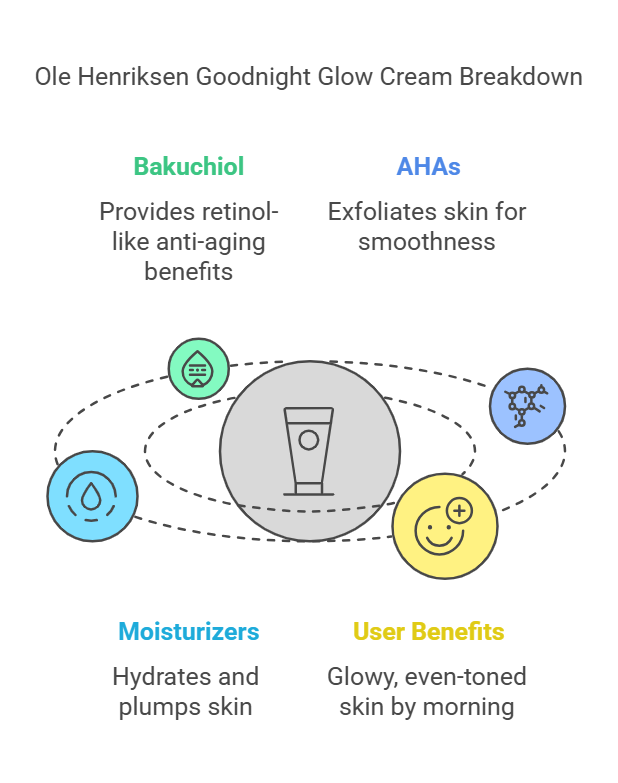
DIY Bakuchiol Formulation: Homemade Recipe for a Natural Glow
For the skincare enthusiasts who love to DIY, you’ll be delighted to know you can create your own bakuchiol-infused skincare product at home! Making a homemade bakuchiol serum is not only cost-effective but also allows you to customize ingredients to your skin’s liking. Below is a detailed, easy-to-follow recipe for a bakuchiol facial oil serum. This nourishing serum will harness bakuchiol’s anti-aging prowess in a natural, minimalistic formula.
DIY Bakuchiol Anti-Aging Facial Oil Serum
Yield: ~1 ounce (30 ml) of serum.
Skin Type: Suitable for most, especially normal to dry or sensitive skin. (Oily/acne-prone skin can use it too, but you might apply a smaller amount or tweak oils as needed.)
Ingredients (all easily available online or at health stores):
Bakuchiol – about 0.5 ml (approximately 10 drops) of bakuchiol extract. This is the star active ingredient. Many DIY skincare suppliers sell bakuchiol (sometimes labelled “Babchi seed oil” or bakuchiol extract). Aim for around 1% concentration of bakuchiol in your final serum for effectiveness, which in a 30 ml recipe comes to ~0.3 ml; we’re using a tad above that for a ~1-1.5% strength. If you’re using Babchi seed oil (which typically contains ~5% bakuchiol
), you’d use a larger amount (about 6 ml) to get equivalent bakuchiol content – but pure bakuchiol extract is preferred for precision.
Rosehip Seed Oil – 15 ml (1 tablespoon). Rosehip oil is a fantastic carrier oil rich in provitamin A, essential fatty acids, and antioxidants. It helps reduce fine lines and hyperpigmentation and complements bakuchiol by supporting skin regeneration
. It’s also lightweight and absorbs well, and is known to help minimize the appearance of pores over time
.
Argan Oil – 10 ml (2 teaspoons). Argan oil is a nourishing, non-comedogenic oil that hydrates and soothes the skin. It’s high in vitamin E and linoleic acid, which help heal and calm irritation
. Using argan will give the serum a silky feel without being too heavy, and it’s suitable for a variety of skin types.
Jojoba Oil (or Sweet Almond Oil) – 5 ml (1 teaspoon). Jojoba oil is very similar to skin’s natural sebum and helps balance oil production; sweet almond is another mild, vitamin-rich oil. This will dilute the texture a bit and ensure the serum isn’t too rich. It also aids absorption and adds extra moisture. (You can substitute another favorite carrier oil here, such as squalane or apricot kernel oil, if you prefer.)
Vitamin E Oil – 5 drops (approximately 0.15 ml). Vitamin E (tocopherol) is an antioxidant that will help preserve the oils (prevent them from going rancid) and provide additional skin benefits
. It helps combat oxidative stress on the skin and can boost the serum’s stability. You don’t need much – a few drops will do the trick.
(Optional) Essential Oil for scent – 1–2 drops. This is purely optional and for those who enjoy a light natural fragrance. You might add one drop of lavender essential oil for a calming scent or rose geranium oil for a floral note. Do not exceed 1-2 drops in 30 ml, as essential oils are potent – especially because we want to keep this suitable for sensitive skin. If in doubt, it’s perfectly fine (and perhaps best for very sensitive users) to leave essential oils out entirely; the serum will have a mild earthy scent from the natural oils which dissipates after application.
Equipment:
- A small beaker or glass mixing bowl (sterilized)
- A 30 ml amber dropper bottle (dark glass helps protect the serum from light, preserving potency)
- A small funnel (to pour oils into the bottle) or a pipette
- Measuring spoons or a graduated dropper to measure ml (or you can convert ml to teaspoons: 5 ml = 1 tsp)
Make sure all tools and the bottle are clean and ideally sanitized with isopropyl alcohol before use – we want our DIY serum to be as pure and uncontaminated as possible.
Instructions:
Prep Your Workspace: Clean your hands and work area. Gather all ingredients and tools. It’s good practice to sanitize the dropper bottle and mixing utensil – you can rinse them in rubbing alcohol and let dry.
Combine Carrier Oils: In your beaker, add the rosehip oil (15 ml), argan oil (10 ml), and jojoba oil (5 ml). Stir them together gently with a clean stirrer or by swirling the beaker. This is the base of your serum.
Add Vitamin E: Add the 5 drops of vitamin E oil to the oil mixture. Stir to distribute it. Vitamin E is a thick oil, so make sure it dissolves into the blend.
Incorporate Bakuchiol: Using a dropper, measure about 0.5 ml (10 drops) of your bakuchiol extract and add it to the beaker. (If your bakuchiol came with usage instructions for a certain percentage, you can adjust the amount. Generally, aim for ~0.5%–1% of the formula to be bakuchiol; our recipe uses ~1–1.5% which is on the higher end but still gentle.) Stir the mixture thoroughly to ensure the bakuchiol disperses evenly into the oils. Bakuchiol is oil-soluble, so it should incorporate well.
Optional – Essential Oil: If you choose to use an essential oil, add 1–2 drops now. Again, be conservative to keep the formulation gentle.
Bottle It: Place your small funnel into the neck of the amber dropper bottle. Carefully pour the mixed serum from the beaker into the bottle. An alternate method is to use a disposable pipette to transfer the liquid, to avoid spills. Cap the bottle with the dropper and give it a little roll or gentle shake.
Label (Optional): It’s helpful to label your bottle with the contents and date. A simple label saying “Bakuchiol Facial Oil – [Month/Year]” will help you remember when you made it. This serum should stay fresh for about 6-9 months (store it properly – see below).
Usage Tips:
When to Use: You can use this bakuchiol serum in your nighttime routine and/or morning routine. Thanks to bakuchiol’s photostability, it’s okay for daytime use (don’t forget sunscreen during the day). If using in the morning, allow it to absorb before applying SPF. Many prefer to use it at night as a rejuvenating treatment before bed.
How to Apply: After cleansing (and toning, if you do), apply 3-4 drops of the serum to your face. Gently press and massage it into the skin, covering your face and neck. It should absorb fairly well, but if it feels a tad oily, you can reduce the amount or wait a few minutes for it to sink in. You can follow with your regular moisturizer if needed, but many will find the oils here provide enough moisture on their own.
Frequency: Start by using it once per day (at night). Bakuchiol is gentle, but it’s wise to let your skin adjust to any new active. If your skin loves it, you can increase to twice daily (morning and night). Most people tolerate daily use from the get-go since the overall formula is mild and nourishing
.
Patch Test: As with any new skincare concoction, do a patch test first – apply a small amount on your inner arm or behind your ear and observe for 24 hours to ensure no adverse reaction, especially if you have sensitive skin
. Allergic reactions to bakuchiol are extremely rare but can happen in some individuals
.
Storage: Keep the serum bottle in a cool, dark place (your cabinet or drawer is fine). The amber bottle will protect it from light, and the vitamin E will help retard oxidation of the oils. Use it up within 6-9 months for best potency. If it develops an off smell, that could indicate the oils have gone rancid – time to make a new batch.
Expectations: With consistent use, you may start noticing a healthier glow and softer texture within a few weeks. For wrinkles and pigmentation, give it about 8-12 weeks to see significant improvements – that’s roughly the timeframe observed in clinical studies for bakuchiol products
. Patience pays off!
This DIY bakuchiol serum is a gentle yet powerful addition to your routine. It’s free of any questionable additives and harnesses the best of nature – botanical oils and extracts – to renew your skin. The combination of rosehip, argan, and bakuchiol delivers a dose of vitamins, antioxidants, and essential fatty acids that can help improve fine lines, firmness, and overall radiance. Many of the ingredients (rosehip, bakuchiol, vitamin E) are known for their anti-aging benefits on their own; together, they create a synergy for youthful, glowing skin.
Feel free to tweak the recipe to suit you – for example, if you’re acne-prone, you might swap argan for a lighter oil like grapeseed, or if you’re very dry, add a bit of avocado oil for richness. The beauty of DIY is you can personalize it. Just keep the bakuchiol concentration moderate (0.5–1%) for safety and efficacy.
Lastly, always remember: natural oils can still cause reactions in some people – “natural” doesn’t mean irritation-proof for everyone (poison ivy is natural too!). But in general, this recipe is quite gentle. If you experience any redness or breakouts, discontinue use and review which ingredient might be the culprit. Most likely, though, you’ll find this DIY serum a soothing, effective treat for your skin that rivals many store-bought products (at a fraction of the cost!).
Enjoy your formulation and the radiant skin that comes with it!
Potential Side Effects & Best Practices for Using Bakuchiol
One of bakuchiol’s biggest selling points is its gentle nature – but it’s still important to use it correctly and be aware of any potential side effects or reactions. Here we’ll highlight possible issues (though they are uncommon), and cover best practices so you can use bakuchiol safely and effectively.
Potential Side Effects or Reactions
Initial Irritation (Uncommon): The majority of people tolerate bakuchiol very well, even at concentrations up to 1-2%. In studies, participants had minimal adverse effects – notably far less than those using retinol
. However, a small percentage of users might experience mild irritation such as slight redness, dryness, or flaky patches, especially if using a higher concentration or if you have extremely reactive skin. This isn’t common, but every individual’s skin is unique. If you do notice any irritation, you can reduce frequency (e.g., use it every other day) or try using a product with a lower concentration or more soothing base.
Allergic Reaction (Rare): Allergic contact dermatitis to bakuchiol is very rare, but there have been a couple of documented cases in medical literature
. Because bakuchiol is a plant-derived compound, it’s possible (though unlikely) for someone to have an allergy to it – just as one could be allergic to an essential oil or botanical extract. Signs of an allergy would include significant redness, itching, swelling, or a rash that develops where you apply the product. If you ever observe these symptoms, discontinue use immediately and gently cleanse the area. You may consider seeing a dermatologist to confirm if it was an allergy to bakuchiol or perhaps another ingredient in the product.
Purging or Breakouts: Bakuchiol is not known to cause the “purging” that some experience with retinol (retinol can speed up pimple formation initially). In fact, bakuchiol has antibacterial and anti-inflammatory effects that could improve acne over time
. Nonetheless, when introducing any new active, a few small breakouts might occur as your skin adjusts – or due to another ingredient in the product. Usually, this is temporary. If breakouts are severe or persist, consider whether the product’s base (oils, etc.) might not agree with you, rather than the bakuchiol itself, which is unlikely to clog pores (it’s non-comedogenic).
Photosensitivity: As noted, bakuchiol does not make your skin more sun-sensitive the way retinol does
. On the contrary, it doesn’t thin the skin and is stable in light
. So you shouldn’t experience the heightened sunburn risk that comes with retinol. However, that is not a license to skip sunscreen! Good practice for any anti-aging routine (or any skincare routine, really) is to use a broad-spectrum SPF daily. UV rays are the number one cause of skin aging, so if you’re trying to combat wrinkles and spots with bakuchiol, you’ll want to protect those gains by shielding your skin from the sun. Think of sunscreen and bakuchiol as best friends – together they keep your skin youthful (one prevents damage, the other repairs). As one source puts it: even though bakuchiol isn’t photosensitizing, you “should still wear sunscreen” every day whether you use bakuchiol or retinol
.
Pregnancy & Health Considerations: As discussed, bakuchiol is generally considered a safe alternative for pregnant or breastfeeding individuals because it’s not a vitamin A derivative
. There are no known side effects specifically related to pregnancy. That said, because long-term safety data is still sparse (bakuchiol is “too new” to have extensive pregnancy studies), some doctors advise using it with caution or after consulting your healthcare provider
The likelihood of any systemic effect is extremely low, but if you’re a mom-to-be and extra careful, talking to a doctor can give you peace of mind. Otherwise, for the average adult, bakuchiol doesn’t have systemic side effects – it’s not known to absorb in any harmful way.
Best Practices for Safe & Effective Use
Introduce Gradually (Patch Test): Whenever you start a new skincare ingredient, it’s wise to patch test first. Apply a small amount of the bakuchiol product on your inner forearm or behind your jawline and wait 24 hours to see if any reaction occurs. If all is clear, proceed to use on your face. While bakuchiol usually doesn’t require the slow introduction that retinol does, if you have very sensitive skin, you could start by using it 2-3 times a week at night, then gradually increase frequency to daily. Most people won’t need such a slow ramp-up, but listen to your skin. If any irritation arises, take a day off or use it less often initially.
Cleansing & Layering: Use bakuchiol on clean skin. After cleansing (and toning, if that’s in your routine), apply your bakuchiol product. If it’s a serum, it typically goes before a moisturizer. If it’s an oil, you might use it after lighter serums or mix a drop into your moisturizer. Bakuchiol doesn’t have the layering conflicts that some actives do – it’s generally stable and plays well with others. In fact, it can be combined with other anti-aging all-stars like vitamin C, niacinamide, peptides, ceramides, and hyaluronic acid with no issue (these can complement each other’s benefits)
. Even exfoliating acids (AHA/BHA) can be used in the same routine as bakuchiol since it’s not as irritating; just ensure your skin can handle the combined routine. If using at night, you might cleanse, apply any treatment toner or acid first, then your bakuchiol serum, then moisturizer. In morning, bakuchiol can go under your sunscreen as a serum or mixed in your day cream.
Combination with Retinol: If you want to use retinol and bakuchiol together (perhaps on alternate nights, or a product that contains both), that can be a very effective strategy. Studies indicate bakuchiol can enhance retinol’s effects and help mitigate irritation
Some brands pair them for this reason. Just be cautious: if you’re using a separate retinol and bakuchiol, introduce one first, get your skin used to it, then add the other, to avoid confusing any irritation source. And remember, if retinol is in your routine alongside bakuchiol, all retinol rules (no pregnancy, night use only, etc.) still apply.
Sun Protection: It can’t be said enough – wear sunscreen daily, especially when using any anti-aging product. Bakuchiol itself won’t cause burn, but protecting your skin from UV ensures you’re not undoing all the good work your skincare is doing. Plus, some bakuchiol products include other actives (like AHAs in the Ole Henriksen cream or vitamin C) that do require sun protection. So slap on that SPF 30 or higher every morning as the last step in your routine
Consistency & Patience: Bakuchiol is not an overnight miracle (nor is retinol). You’ll need to use it consistently, usually for several weeks to a few months, to see significant improvement in wrinkles, pigmentation, or firmness. In the 12-week study, results were measured at the end of 3 months
. Some people report brighter, calmer skin within a couple of weeks, but deeper changes like reduction in fine lines or spots take more time. Stick with it – the gentleness means you might not see dramatic peeling or instant changes, but under the surface, bakuchiol is working to remodel collagen and repair skin. Think of it as a slow and steady wins the race scenario. Many find that at the 8-week mark, they suddenly notice their skin looks smoother and “fresher.” Take before/after photos for yourself to track subtle changes.
Choose the Right Concentration: Check the product details – effective bakuchiol products typically use between 0.5% and 2% bakuchiol
. If a product doesn’t disclose percentage but lists bakuchiol high in the ingredients, chances are it’s in that range. For DIY use, experts suggest ~1% as a good target. Using significantly more than 2% has not been studied and could be wasteful or potentially irritating. Sticking to that range ensures you get results seen in studies.
Watch for Other Actives: Bakuchiol products often come with friends – e.g., bakuchiol + vitamin C (for brightening), or bakuchiol + peptides (for extra firming), or bakuchiol + acids (for exfoliation). This is great for multi-tasking, but be aware of what else is in your product so you don’t unknowingly double-up in your routine. For instance, if your bakuchiol serum also has AHA, you might not need a separate acid toner the same night. Or if it has retinol (like Paula’s Choice does), treat it as a retinol product in terms of usage guidelines. Always read the label and adjust your routine accordingly.
Storage: Store bakuchiol products as directed – generally in a cool, dark place. While bakuchiol is more stable than retinol, any skincare lasts longer when protected from heat and light. If your serum comes in a UV-protective bottle, keep it that way. Use up opened products within the shelf-life (usually 6-12 months for most serums once opened).
When to Expect Results: As a best practice, give any new skincare at least 4-6 weeks to gauge initial results (that’s about how long a skin cell cycle is). For bakuchiol, many see improvements around the 4-8 week mark, with continued gains at 12 weeks and beyond
. If after 3 months of faithful use you don’t see any improvement, you might re-evaluate the product you chose (maybe the concentration is too low or the formulation isn’t penetrating well). But don’t give up too soon – bakuchiol is working behind the scenes even if it’s gentle on the surface.
Listen to Your Skin: Lastly, always pay attention to how your skin responds. While bakuchiol is forgiving, every individual can react differently. If something doesn’t feel right (excessive dryness, breakouts, etc.), scale back or pause and consult with a dermatologist. It might be something else in the formula, or bakuchiol might not agree with you (again, rare, but possible). Skincare is personal. The goal is happy, healthy skin.
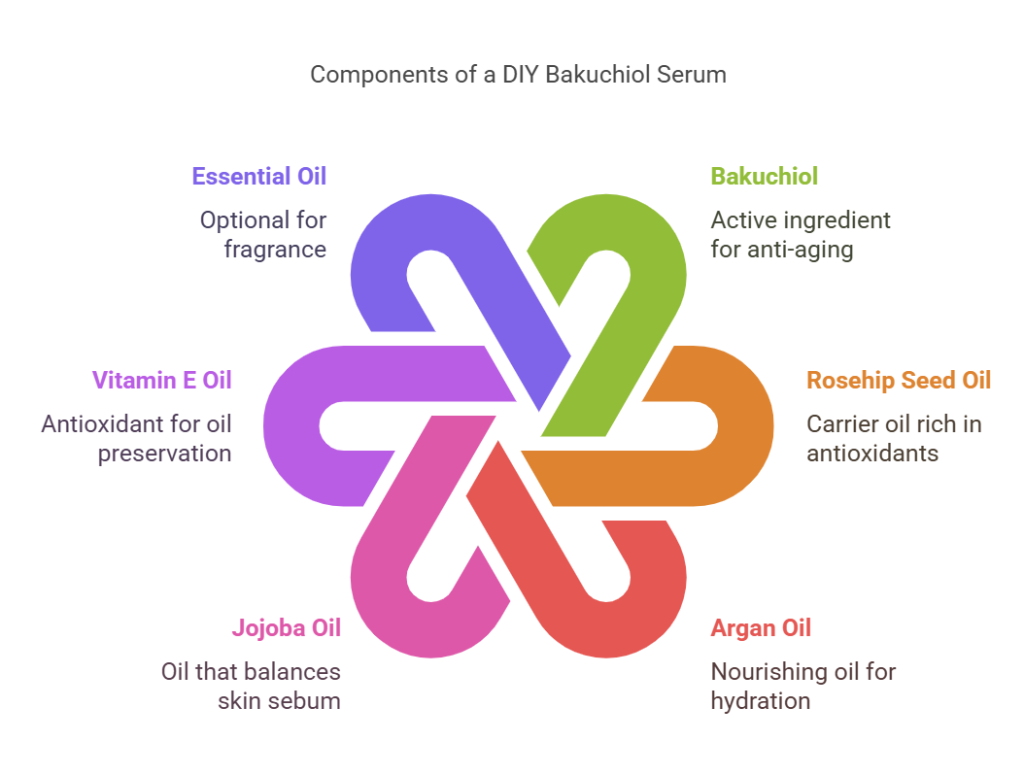
What to Expect: The Bakuchiol Experience
When used correctly, bakuchiol can yield a multitude of benefits: smoother texture, diminished fine lines, enhanced firmness, and a more even tone and glow. Many users comment that their skin feels softer and more supple, and looks more radiant after incorporating bakuchiol for a while. Those with acne might notice less inflamed breakouts and faded post-acne marks, thanks to bakuchiol’s anti-inflammatory and melanin-inhibiting effects
Importantly, you can expect minimal downtime – unlike strong retinoids, bakuchiol typically won’t give you a phase of red, flaky “ugly duckling” skin. It’s a gentle journey to results, which is far more pleasant for most people.
By following these best practices, you can maximize results and minimize any hiccups. The overall message is that bakuchiol is user-friendly, even for skincare beginners. It’s one of those actives you don’t have to be too afraid of, yet you should still use thoughtfully to get the best outcome. Treat your skin with kindness and consistency, and bakuchiol will return the favor with a healthy, youthful complexion.
Embrace Bakuchiol for Your Best Skin Ever
Intrigued by bakuchiol? You’re not alone – this botanical gem has captured the hearts of skincare lovers and experts alike for good reason. Now that you’re armed with knowledge about what bakuchiol is, how it compares to retinol, the science behind it, and how to use it, why not take the next step and experience it for yourself?
✨ Ready to glow naturally? Here are some ways to get involved and take action:
Explore Bakuchiol Products: Consider trying one of the top bakuchiol products we reviewed above. Whether it’s a fan-favorite serum like Biossance or a wallet-friendly pick like The Inkey List, adding bakuchiol to your skincare routine could be a game-changer for your skin. Pick a product that suits your skin type and budget, and give it a go. (Always patch test first!) Your skin could be on its way to looking smoother, firmer, and more radiant in a matter of weeks – all thanks to this natural retinol alternative.
Get Crafty with DIY: If you love a hands-on approach, try our DIY bakuchiol serum recipe. It’s a fulfilling experience to create your own skincare, and you’ll be using pure, wholesome ingredients. Plus, there’s nothing quite like applying a serum you made yourself! Follow the recipe and customize it as you like. Once you’ve made your batch, let us know how it turned out. Did you notice the nourishing feel and glow it gave your skin? We’d love to hear your DIY success stories.
Share Your Experience: Already a bakuchiol user? Or once you start using it, track your results. Share your before-and-after stories or photos with our community. Did bakuchiol live up to the hype for you? Everyone’s skin journey is unique, and your experience could help someone else make informed decisions. Drop a comment below about your favorite bakuchiol find or any tips you have – let’s learn from each other!
Stay Updated & Connected: The world of skincare is ever-evolving, and exciting new ingredients (and studies) are always on the horizon. To keep up with the latest trends – from natural actives like bakuchiol to dermatologist-approved tips – subscribe to our newsletter. By subscribing, you’ll get updates on new blog posts, product reviews, and exclusive skincare tips delivered straight to your inbox. Join our community of skincare enthusiasts and be the first to know about nature’s next big thing or the newest hack for healthy skin. (Plus, you’ll get notifications when we publish more in-depth guides like this one!)
Engage with Us: If you have questions about bakuchiol or need personalized advice, don’t hesitate to reach out. Leave a comment or question, and we’ll do our best to help. Curious about how to incorporate bakuchiol with your existing routine? Need recommendations for a specific skin concern? We’re here as a resource. Your engagement not only helps you get answers but also helps us understand what content you find most valuable.
In conclusion, bakuchiol offers a beautiful blend of nature and science – it’s the kind of ingredient that shows how far skincare has come, giving us effective alternatives that suit even those with the most sensitive skin. It enables more people to partake in the benefits of “retinol-like” results without the typical hurdles.
Your journey to healthier, younger-looking skin could very well be one bakuchiol serum away. So go ahead – embrace this gentle ingredient and watch your skin transform over time. Whether you choose a luxurious serum or mix up a homemade potion, you’re investing in your skin’s future.
Thank you for reading! We hope this comprehensive guide has answered all your questions and inspired you to give bakuchiol a try. If you found this article helpful, feel free to share it with fellow skincare enthusiasts or anyone who might be looking for a retinol alternative. Here’s to achieving that radiant, glowing complexion naturally!
Stay glowing, stay curious, and happy skincare-ing! ✨

